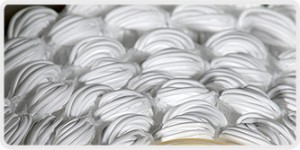hollow fibre UF
Hollow Fibre UF UltraFiltration. The next giant leap in water filtration. Already designed into AQUAPHOR water filters.
Since its inception, AQUAPHOR’s products included the newest developments in water purification. Specialist process types that were only available in larger scale industrial systems. Now available in AQUAPHOR brand small scale household filters. One of the latest leaps is the hollow fibre membrane.
Hollow fibre UF membranes are micro-thin fibres with porous walls. The tubules (fibres) are around 1mm diameter. The pores that allow water to flow through the fibres are up to 0.1 microns in size. This is 600-800 times thinner than human hair. Smaller than most impurities to pass through.
advantages of hollow fibre membranes
Filtration of mechanical impurities (clay, sand, rust) larger than 0.1 micron – Removing clay, sand, rust and colloidal iron particles. Allows for perfectly clear water. Water that has gone through a hollow fibre UF membrane tastes and smells better. But more importantly is safer for human consumption. Small particle pollutants, say, iron hydroxides, can irritate the epithelial wall of the intestines. Cause of a range of digestive dysfunctions.
Filtration of microorganisms and bacteria – It is nearly impossible to reduce pore sizes of conventional filters below 0.7 – 0.8 microns (polypropylene or carbon-block cartridges). This is not sufficient to reliably filter out harmful bacteria. (E. coli is between 0.3 – 6 microns in size. While Staph. aureus has a size of 0.5 – 1 microns.)
Filtration of Giardia cysts – The cyst form of Giardia is like a cocoon. Resistant to external factors. Including chlorination. Most household filters have no reliable anti-Giardia ability. The most effective method of removing Giardia cysts from drinking water is mechanical filtration through a hollow fibre UF membrane.
hollow fibre UF membranes in AQUAPHOR filters
 AQUAPHOR is the only brand of water filters to use hollow fibre UF membrane options in reverse osmosis.
AQUAPHOR is the only brand of water filters to use hollow fibre UF membrane options in reverse osmosis.
This technology is used for end stage filtration in the Crystal family of filters, as well as the reverse-osmosis AQUAPHOR Morion system. Module K1-07B uses a hollow fibre UF membrane (made by Mitsubishi, Japan). Also in combination with an AQUAPHOR-made 0.8 micron carbon block to provide ultimate filtration.
Micro-crystalline activated silver in the carbon block prevents bacteria captured by the filter to reproduce. This increases the working life of the hollow fibre UF module.
other useful properties of hollow fibre UF membranes
Hollow fibre UF membranes combine the unique abilities of sieve type filters (flat-surface filtration) and bulk filters (large-volume filtration). Sieve type enjoy a uniform pore size. While bulk filters have a large absorbent capacity
 Environmentally sound production – Unlike rolled membranes as in reverse-osmosis, hollow fibre UF membranes are made from pure polyethylene. (Without the use of solvents.)
Environmentally sound production – Unlike rolled membranes as in reverse-osmosis, hollow fibre UF membranes are made from pure polyethylene. (Without the use of solvents.)
Non-reactive materials – Made of pure polyethylene – one of the most inert materials known. Hollow fibre membranes have a long service life and can hold up well under unfavourable conditions.
Huge filtering surface in a small volume of space – The effective surface area of the hollow fibre UF membrane used in AQUAPHOR filters is 7,500 cm2 – over 8 sq. ft.
Large absorbent capacity – A hollow fibre UF membrane is able to filter a larger amount of “dirt” (large-particle impurities) than bulk filters such as polypropylene cartridges or carbon blocks.
how hollow fibre UF are made
Molten polymer is pulled through an extruder, so that thin tubes forms. The tubule material is of a variable consistency. Some areas are elastic and some are crystalline.
Then the polymer tubule cools and sets. It is stretched precisely to the point where crystalline areas tear. This creates micro-pores of a specific uniform diameter in the walls of the tubule.
These micro-pores are what allows water filtration to take place. Changing the level of extrusion makes for hollow fibres of different sizes and porosity.
The next step is for the fibres, cut to length, are gathered into bundles. Then folded in half into a loop shape. The “entrances” and “exits” (the openings on each end of each tubule) end up next to each other on one end of the loop.
Then polymer resin is poured into the tubule openings. After it sets, it is cut off so as to widen the tubule ends. The loops of polymer fibres are now in their finished stage. Then are gathered together and fit inside the filter housing. The hollow fibre UF membrane is now complete.
Water enters on the closed ends of the loops. Seeping through the micro-pores. Then clean through the tubule openings on the other side.



